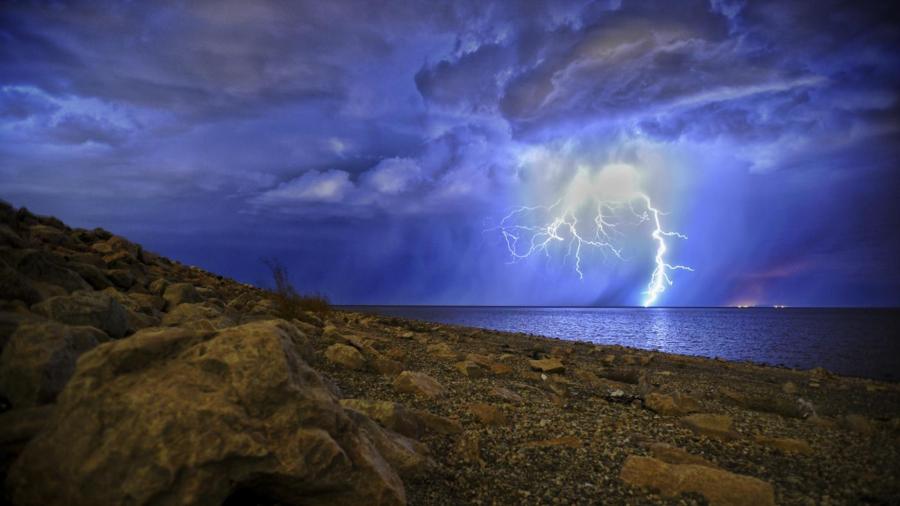This is a situational "what do you do" topic.
You are paddling on open water, not near the put-in, take-out or the day's campsite. The shore has trees and bushes, and so does a nearby small island. A strong lightning storm quickly blows in—the kind you know will blow out and be over in 30 minutes or so. What is your safety practice? Where do you go and what do you do?
I've never been sure about the electrical conductivity of lightning that hits water. Can it reach my canoe? Nor am I sure about how insulated I am in a canoe made of different materials—wood vs. plastic vs. composite*. I assume an aluminum canoe would be the most conductive.
I've always been told not to go under a lone tree, or a lone copse of trees, or the tallest tree in a lightning storm. I wouldn't go to the small island for fear that it stands out too much.
So, what I've usually done is to put on my rain gear, park near the shore under some low trees or brush, and wait out the storm while sitting in the (not aluminum) canoe. But maybe I'd really be safer if I got out of the canoe and tried to sit on land under those low trees or bushes.
When it's just rain and light wind, I prefer to paddle in the rain rather than try to set up camp at some iffy location.
_______________________
* This topic entered my head when I was reading that: "Since [E-fiberglass] was developed specifically for use in electrical applications, one of its key characteristics is its ability to insulate electricity." This made me wonder if an E-glass canoe would be the safest hull material.
You are paddling on open water, not near the put-in, take-out or the day's campsite. The shore has trees and bushes, and so does a nearby small island. A strong lightning storm quickly blows in—the kind you know will blow out and be over in 30 minutes or so. What is your safety practice? Where do you go and what do you do?
I've never been sure about the electrical conductivity of lightning that hits water. Can it reach my canoe? Nor am I sure about how insulated I am in a canoe made of different materials—wood vs. plastic vs. composite*. I assume an aluminum canoe would be the most conductive.
I've always been told not to go under a lone tree, or a lone copse of trees, or the tallest tree in a lightning storm. I wouldn't go to the small island for fear that it stands out too much.
So, what I've usually done is to put on my rain gear, park near the shore under some low trees or brush, and wait out the storm while sitting in the (not aluminum) canoe. But maybe I'd really be safer if I got out of the canoe and tried to sit on land under those low trees or bushes.
When it's just rain and light wind, I prefer to paddle in the rain rather than try to set up camp at some iffy location.
_______________________
* This topic entered my head when I was reading that: "Since [E-fiberglass] was developed specifically for use in electrical applications, one of its key characteristics is its ability to insulate electricity." This made me wonder if an E-glass canoe would be the safest hull material.

